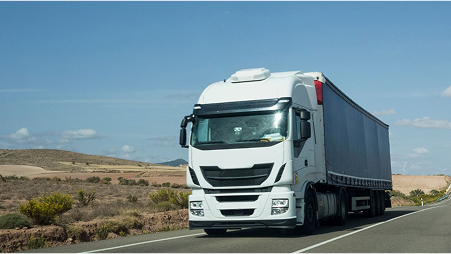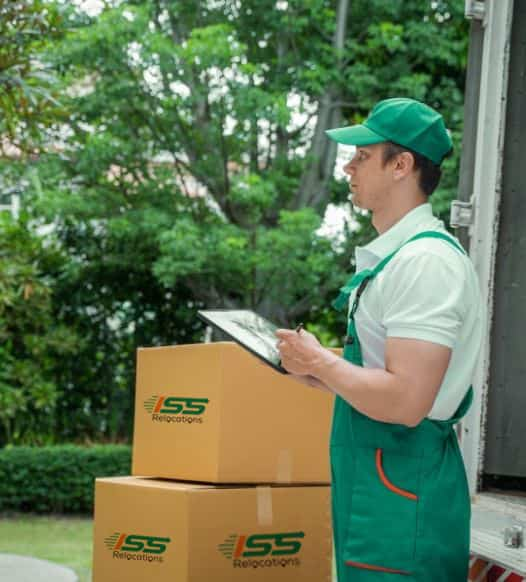
How to Handle Difficult Items During a Local Move
Moving is an exciting process that can be overwhelming, especially when you have to move difficult items such as large furniture, delicate electronics, and heavy machinery. Whether you are moving to a new home or relocating your office, it is important to ensure that your belongings are safe and secure throughout the entire moving process. In this blog post, we will discuss some tips and tricks that can help you handle difficult items during a local move. We will cover topics such as preparing for the local move, packing difficult items, transporting difficult items, and unpacking difficult items. By following these tips, you can ensure that your move goes smoothly and your belongings are protected.
Make Your Move Stress-Free!
Tips to handle challenging items smoothly during relocation
Section 1: Preparing for the Move
Moving can be a hectic and overwhelming process, and it’s essential to prepare adequately to ensure that everything goes smoothly. The first step in preparing for a move is to assess your belongings. Take inventory of all the items you need to move, and categorize them based on their size, weight, and fragility. This will help you identify which items require special attention and care during the local move, and it will also help you determine the number of boxes and packing materials you will need.
Once you have assessed your belongings, the next step is to consider hiring a professional moving company. A professional moving company such as ISS Relocations will have the expertise and experience to handle difficult items, ensuring that they are transported safely and securely. It’s essential to do your research and choose a moving company that has a good reputation and positive reviews from past customers. This will give you peace of mind knowing that your belongings are in good hands.
After you have hired a moving company, the next step is to plan the logistics of the move. Create a detailed plan for the local move, including the transportation of difficult items. This will help you avoid any last-minute complications and ensure that everything goes smoothly on the day of the move. Make sure you have a clear understanding of the route that will be taken, any potential obstacles that may need to be overcome, and the estimated time of arrival at your new location. This will help you plan your day and ensure that everything is ready for the movers.
When planning the logistics of the local move, it’s also important to consider any special requirements for your belongings. For example, if you have large, heavy furniture, you may need to make special arrangements for their transportation. Similarly, if you have fragile items such as electronics or artwork, you may need to use specialized packing materials to ensure that they are not damaged during the move. Make sure you discuss any special requirements with your moving company in advance to ensure that they are adequately prepared.
In addition to preparing your belongings for the local move, it’s also important to prepare your home or office. Make sure you clean and organize your space, and clear any obstacles that may impede the movers’ progress. This will help ensure that the movers can complete the move quickly and efficiently, minimizing the risk of damage to your belongings.
Overall, preparing for a move requires careful planning and organization. By assessing your belongings, hiring a professional moving company, and planning the logistics of the move, you can ensure that your belongings are safely and securely transported to your new location.
Section 2: Packing Difficult Items
Use extra padding for fragile items: When packing fragile items such as electronics, artwork, and mirrors, use extra padding and protection to ensure they are not damaged during the move. Wrap them in bubble wrap or packing paper and use sturdy boxes for transport. You can also use foam padding or peanuts to provide additional cushioning.
Wrap items with irregular shapes: For items with irregular shapes such as lamps, vases, and statues, use bubble wrap and packing paper to protect them from scratches and other damages during the move. If possible, place them in their original packaging or in boxes that are appropriately sized and cushioned.
Pack clothing and linens creatively: Instead of folding your clothes and linens and packing them in boxes, try packing them in suitcases or other bags with wheels. This will not only make them easier to transport but also save space in the moving truck.
Transport large appliances carefully: large appliances such as refrigerators, washing machines, and dryers require special attention during the local move. Make sure they are properly disconnected and drained of any liquids. Secure the doors and other loose parts with tape or rope, and use specialized moving blankets to protect them from scratches and other damages during the move.
Consider using a professional packing service: If you’re not confident in your packing skills or don’t have the time or energy to pack, consider using a professional packing service. Many moving companies offer packing services, which can save you time and ensure that your belongings are packed safely and securely.
Create an inventory of packed items: As you pack, create an inventory of all the items you have packed, and keep track of which box they are in. This will help you keep track of your belongings during the move and make it easier to unpack when you arrive at your new home.
Speak To Our Moving Experts!
Section 3: Transporting Difficult Items
Use the right equipment: Use specialized moving equipment such as dollies, hand trucks, and furniture straps to transport heavy and bulky items. This will make the local move safer and more efficient. Make sure the equipment is in good condition and functioning properly before you begin using it. If you are unsure how to use the equipment, ask the moving company for guidance.
Protect fragile items: Use extra padding and protection to ensure that fragile items such as electronics, artwork, and mirrors are not damaged during the move. Wrap them in bubble wrap or packing paper and use sturdy boxes for transport. Label the boxes as fragile to ensure that they are handled with care.
Secure everything: Use ropes, bungee cords, and straps to secure all your belongings during transportation. Even the most securely packed items can shift during transport, leading to damage or breakage. It is essential to secure everything properly to prevent any mishaps during the move. Use high-quality ropes, bungee cords, and straps to keep your belongings in place.
For example, use furniture straps to secure large and bulky items such as mattresses and sofas. You can also use ratchet straps to secure appliances such as refrigerators and washing machines. Make sure that everything is securely fastened and cannot move during transportation.
Section 4: Unpacking Difficult Items
Moving is not just about packing and transportation. Once you reach your new home or office, you will have to unpack everything and set it up again. Unpacking difficult items can be just as challenging as packing them, especially if you have to reassemble furniture or equipment. Here are some tips to help you unpack difficult items safely and efficiently.
Take your time: When unpacking difficult items, take your time and be careful. Rushing can lead to accidents and damage to your belongings. Unpacking fragile items such as electronics, artwork, and mirrors requires extra care and attention. Take your time to unwrap and unpack them carefully, and place them in their designated locations.
Follow instructions: If you disassembled any furniture or equipment, make sure you follow the instructions carefully when reassembling them. Many furniture items come with instructions, and it is essential to follow them to ensure that everything is assembled correctly. Using the wrong screws or putting something in the wrong place can lead to damage or breakage.
Check for damage: Inspect all your belongings for any damage or missing parts. If you find any damage, notify the moving company immediately. Most professional moving companies have insurance that covers any damage to your belongings during the move. However, you must report any damage as soon as possible to ensure that you are fully compensated.
Conclusion:
Moving difficult items can be a daunting task, but with the right preparation and planning, it can be done safely and efficiently. Whether you are moving to a new home or relocating your office, these tips and tricks can help you handle difficult items during a local move. Remember to assess your belongings, hire a professional moving company, and plan the logistics of the move to avoid any last-minute complications.
When packing difficult items, use the right packing materials, disassemble large furniture, and label everything. Transport difficult items using the right equipment, protect fragile items, and secure everything properly to prevent any mishaps during the move. When unpacking difficult items, take your time, follow instructions, and check for any damage.
Finally, remember that hiring a professional moving company such as ISS Relocations can make all the difference in ensuring a successful local move with zero damage. Professional local movers have the expertise, experience, and equipment to handle difficult items safely and securely, giving you peace of mind during the entire moving process.
Plan Stress-free Move with Top Moving Company in UAE - ISS Relocations

Frequently Asked Questions
What is considered a local move in Dubai?
A local move in Dubai refers to relocating within the city or its surrounding areas, typically involving short distances. ISS Relocations specializes in local moves, offering efficient services to help you relocate your belongings safely and securely within Dubai, ensuring a hassle-free experience.
What do local movers do?
Local movers handle all aspects of your relocation within the same city, including packing, transportation, and unpacking. ISS Relocations provides expert local moving services, ensuring that your items are securely packed, transported, and set up in your new home or office in Dubai.
How much do movers cost in UAE?
The cost of hiring movers in the UAE depends on the size of your move, distance, and the services required. Typically, local moves in Dubai can cost between AED 500 and AED 3,000. ISS Relocations offers affordable and customized moving packages, ensuring a smooth and cost-effective local move.
How long does a local move take?
A local move in Dubai can take anywhere from a few hours to a full day, depending on the size of your move and the complexity of the items being relocated. ISS Relocations ensures that your local move is completed efficiently, with expert movers handling every detail to minimize downtime and ensure timely delivery.
How much does a local move cost?
The cost of a local move in Dubai varies depending on the size of your belongings, distance, and additional services like packing. On average, it may cost between AED 500 and AED 2,500. ISS Relocations offers transparent pricing, ensuring a cost-effective and high-quality moving experience for your local move.
How do I choose a moving company in Dubai?
When choosing a moving company in Dubai, consider factors like reputation, experience, customer reviews, and pricing. ISS Relocations is a trusted provider of local moving services, offering secure and professional solutions tailored to your specific needs, making your move in Dubai seamless and stress-free.
How do I prepare for movers in UAE?
To prepare for movers in the UAE, start by decluttering, packing non-essentials, and ensuring your new home or office is ready for move-in. ISS Relocations helps you with expert packing, transportation, and unpacking services, making your local move in Dubai quick, easy, and organized.
Moving Company - Recent Blog
Stay informed and prepared for your next move with our latest blogs on moving services in the UAE. From expert packing tips to international relocation guides, ISS Relocations brings you up-to-date insights to make your moving experience smoother, safer, and stress-free.










